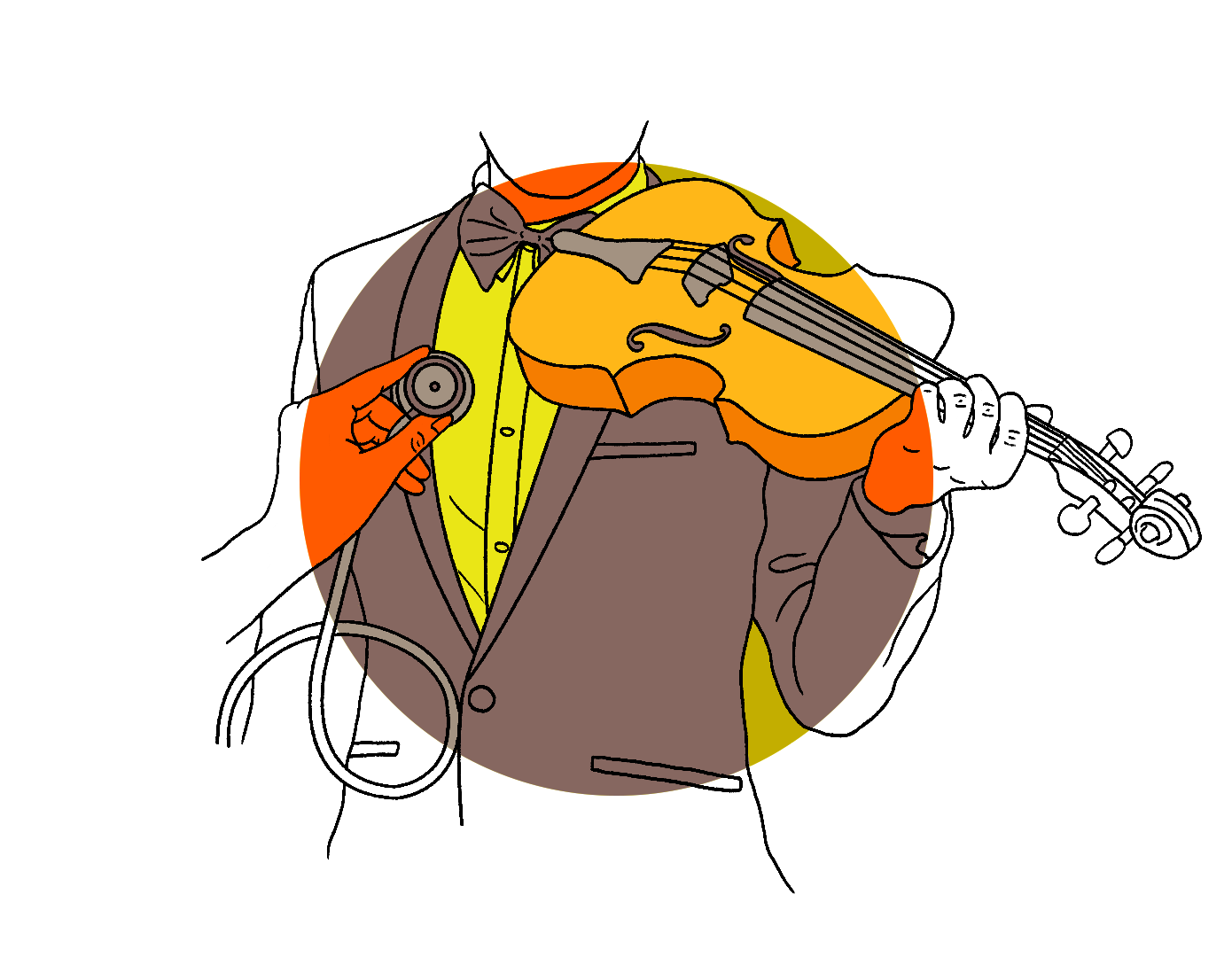Pioneering research by UCL shows a powerful link between health and arts & cultural engagement, opening up novel ways of managing and treating mental and physical health conditions.
With NHS waitlists and treatment backlogs covering the front pages of most UK newspapers, the pressure is on to explore radically novel solutions for our health service.
Our research group at UCL has solutions to offer, but what we bring to the table is not radical in the traditional sense. We’re not offering glitzy apps or high- tech products. We’re offering resources that already exist in our communities, but which are rarely harnessed for their potential to prevent and treat health issues: arts and cultural assets. Unfortunately, these resources haven’t formed part of the usual care you receive when you visit your GP. But this has all begun to change in recent years, with innovative pilots paving the way for a national social prescribing rollout aiming to reach 900,000 people a year by 2024. Social prescribing allows GPs to refer people to a variety of community programmes, including those related to the arts and culture. It is part of the NHS Long Term Plan to expand personalised care, and it’s becoming increasingly recognised for its value in addressing the social challenges that land many in poor physical and mental health.
Much of the evidence for social prescribing comes from research that examines the effects of arts interventions on mental and physical health. For example, a wealth of evidence already shows how arts activities such as singing can be used to treat depression. However, the studies are typically small in size (dozens or hundreds of people only), unrepresentative (the people who take part may be different from the rest of the population) and only follow people for a short period (weeks or months). So we’ve taken another approach, examining how arts and cultural engagement can affect the health of tens of thousands of people over years, if not decades.
To do this, we use large longitudinal cohort studies that are available to researchers across the UK. These track people across their entire lifespans, rigorously assessing every aspect of their lives. The studies are jewels in the UK’s research infrastructure, but their relevance to arts and culture was unappreciated until our work began.
These models have tremendous significance for how we can design health programmes to prevent, manage and treat physical and mental health conditions
We recognised that buried within them were dozens of questions on how people participate in the arts. We then used cutting-edge statistical techniques to look for associations between arts participation and health outcomes. Most excitingly, because the samples are representative of the population, our findings reflect how the arts could impact health at a societal level.
We’ve also explored whether arts engagement is related to the incidence of health conditions in the first place – a question that had never been considered. Over the past five years, we’ve found significant evidence for the preventative effects of the arts on health. For example, women who listen to music during pregnancy are less likely to develop postnatal depression in the three months after birth. Older adults in England (age 50+) who regularly participate in cultural activities (for example, attending the theatre, cinema or galleries) have nearly half (48%) the risk of developing depression compared to people who do not engage in culture. They are also more likely to have higher levels of wellbeing, a lower risk of loneliness, a lower risk of developing chronic pain and a lower likelihood of becoming frail. We also found lower risks of those in this group developing dementia or having poorer cognitive functioning.
On the other end of the age spectrum, we’ve found that arts and cultural engagement can have long-lasting effects from childhood to adolescence. Specifically, children aged seven who take part in creative activities have a lower risk of developing behavioural problems in early adolescence. If children tend to read for pleasure, they are less likely to use cigarettes and alcohol at age 14, and they also have lower levels of hyperactivity, inattention, and better prosocial behaviour.
Adolescents also benefit from arts engagement. They are less likely to be antisocial, to behave criminally, to perceive such behaviour positively, and they are more likely to have better self-control. Alcohol, marijuana and tobacco use are also less common among teenagers taking part in arts groups.

In all of these observational analyses, we recognised two key methodological issues. First, that people who engage in arts and culture could be ‘different’ from the rest of the population – perhaps healthier, wealthier, better educated, living in more affluent areas, retired or with more free time – which may be why they have better health outcomes. But, using advanced statistical techniques, we found that while demographic, health, social and behavioural details did partly explain some of the associations between the arts and health, they did not explain the whole picture. Independent relationships between arts, culture and health were maintained despite these other factors.
Second, with observational data we don’t have the same certainty over causality that we would have by conducting trials in which people are randomised into ‘intervention’ and ‘control’ groups. This is a challenge that anyone working on cohort data faces, but we’ve used the latest statistical techniques to ‘infer’ causality. For example, we’ve matched people who engage in the arts with ‘twins’ in the same dataset who mirror them on all important lifestyle factors but who are not engaged in the arts. Essentially, we’ve mimicked intervention and control groups. We’ve also applied different techniques to the same research question to allow the strengths and weaknesses of each method to balance out and to check that analyses converge on the same finding. We’ve even analysed cohorts in other countries to check that unique contexts aren’t leading to spurious associations. As our findings continue to corroborate those from rigorous causal trials, we have more and more confidence in what we’re discovering.

A large part of our work in recent years has turned to the question of ‘why’: what is it about the arts that means they have the capacity to affect our health and how does this happen? Two major developments from our work have been the identification of over 130 ‘active ingredients’ in arts activities that all have the potential to affect health, and over 600 ‘mechanisms of action’ that link these ingredients to specific mental and physical health outcomes. These ingredients include aspects of arts activities themselves, the social components that can be involved in engaging and participating, and the context within which activities are delivered. Mechanisms are the processes that link arts engagement with health outcomes and they can be psychological, biological, social and behavioural. We’re proposing new complex theoretical models that explain the interrelationship between these ingredients, mechanisms and outcomes in our scientific papers. These models have tremendous significance for how we can design health programmes to prevent, manage and treat physical and mental health conditions.
Unfortunately, we’re also finding that many people face barriers to accessing cultural resources, especially individuals from less advantaged backgrounds. People with mental health conditions, with low levels of happiness, who are in poor health and who live in deprived areas are also less likely to engage. This is a big challenge because it means that those who are most likely to experience poor health are also more likely to miss out on the health benefits of arts engagement. Fortunately, regardless of where people live, we’ve found they can experience the same health benefits from the arts. But the question is, how can we remove obstacles for people who need the arts the most?
This returns us to social prescribing, which aims to help equalise arts and cultural access and address health inequalities. However, current schemes are far from meeting health demand, which will inevitably increase due to the consequences of the pandemic, the cost-of- living crisis, our ageing population, increasing geopolitical tension and its repercussions, the rising burden of mental health, years of underfunding of our NHS, the increasing burden of chronic diseases and multiple other challenges. More work is needed to understand how social prescribing may address these inequalities.
These are also worldwide problems, and the World Health Organisation is already working with us to explore the potential of the arts and social prescribing to improve health in communities across the world. The field of arts-in-health offers limitless opportunities to address these problems, but we need governments, healthcare systems and investors to prioritise the arts for population health. We need a massive funnelling of capital into the arts sector to provide essential cultural assets for social prescribing schemes. And we need to bring together community groups, arts organisations, health services and other partners to revolutionise our approach to healthcare delivery.








